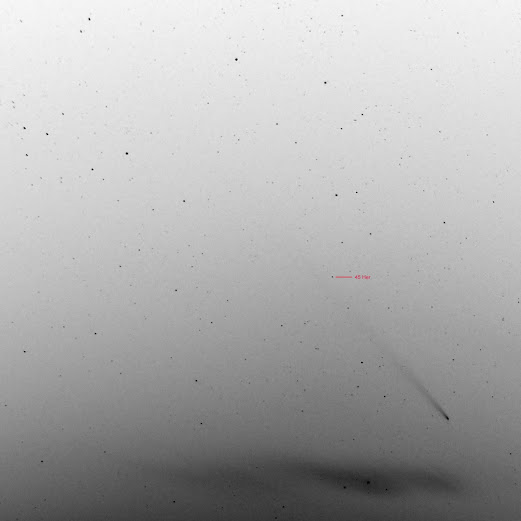I have been wanting to get out for a week or two now and see Venus with my telescope since this planet has been more visible in the evening sky. Venus is approaching its greatest elongation east on the 10th January 2025 and it will then be at its furthest angular distance from the sun as viewed from earth. However, this is not going to be a very good apparition because the ecliptic (near to which Venus travels) is going to be low down in our sky.
One of the things I wanted to do with an observation is to estimate Venus's phase as it approaches elongation. When Venus came out of superior conjunction on the 4th June, its phase was full and ever since then its phase has been decreasing and it will reach dichotomy (half phase - equal dark and light) on January 12th 2025. On the 14th December I spotted Venus low in the SSW at an altitude of 5 to 6 degrees. Although there was a bit of intermittent thin cloud I thought it worth getting out my Celestron NexStar 102 SLT and having a look. I didn't bother with a proper set up of this computer controlled telescope but just pointed it in the right direction. Here is a page out of my notebook:-
I used a 9mm Orthoscopic eyepiece that I have owned for about 43 years to get a good view of the planet. The NexStar has a focal length of 660mm and so this gives a magnification of about 660/9 = 73. I had drawn a circle in pencil in my notebook and then at the telescope at around 17.10 UT I drew the phase as I saw it. I had no preconceived notion of what the phase would be and so my choice of shading was as I thought it should be.
I should first point out that the phase is technically the ratio of the apparent area illuminated to the total apparent area of the planet. This is not very easy to measure directly! However, provided that Venus behaves like an illuminated sphere then the phase can be determinded from measuring how far along the "equator" the terminator is and then dividing this by the apparent diameter. I will prove this at some point in another blog entry.
From my diagram the terminator was 18 mm from the right edge and the diameter was 32mm and so I estimated the phase to be 18/32 = 0.563. The predicted phase on this date from my BAA handbook was 0.631 and so the difference was 0.068. Note that with my use of a star diagonal south is at the top of my image but west is still to the right.
I don't think this was too bad. In actual fact many observers underestimate the phase of Venus in an eastern elongation and this is known as the Schröter Effect. I will try and write about this more later.
All text and images © Duncan Hale-Sutton 2024
.jpg)











